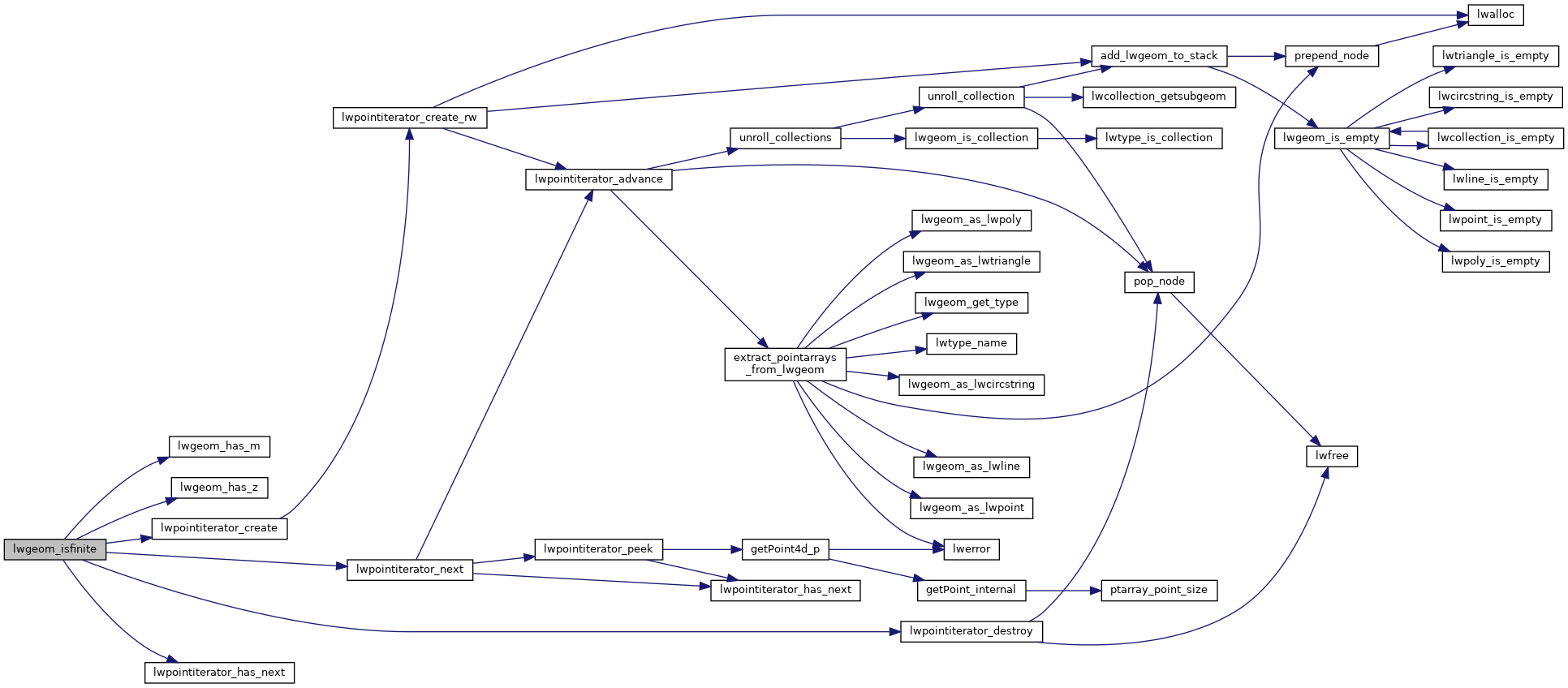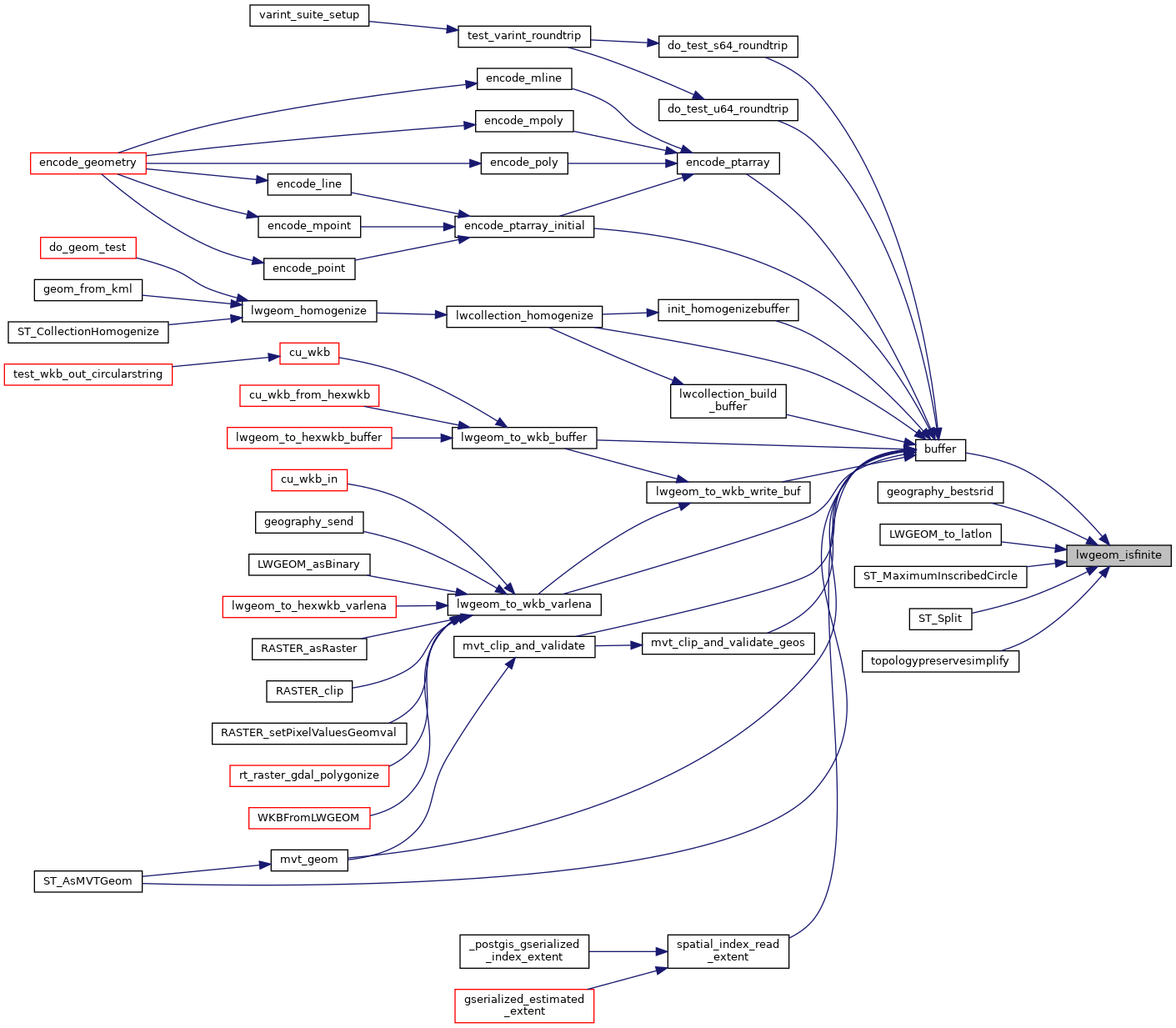◆ lwgeom_isfinite()
| int lwgeom_isfinite | ( | const LWGEOM * | lwgeom | ) |
Check if a LWGEOM has any non-finite (NaN or Inf) coordinates.
Definition at line 2540 of file lwgeom.c.
LWPOINTITERATOR * lwpointiterator_create(const LWGEOM *g)
Create a new LWPOINTITERATOR over supplied LWGEOM*.
Definition: lwiterator.c:242
int lwpointiterator_next(LWPOINTITERATOR *s, POINT4D *p)
Attempts to assign the next point in the iterator to p, and advances the iterator to the next point.
Definition: lwiterator.c:210
void lwpointiterator_destroy(LWPOINTITERATOR *s)
Free all memory associated with the iterator.
Definition: lwiterator.c:267
int lwpointiterator_has_next(LWPOINTITERATOR *s)
Returns LW_TRUE if there is another point available in the iterator.
Definition: lwiterator.c:202
int lwgeom_has_z(const LWGEOM *geom)
Return LW_TRUE if geometry has Z ordinates.
Definition: lwgeom.c:917
int lwgeom_has_m(const LWGEOM *geom)
Return LW_TRUE if geometry has M ordinates.
Definition: lwgeom.c:924
Definition: lwiterator.c:45
Definition: liblwgeom.h:427
References LW_FALSE, LW_TRUE, lwgeom_has_m(), lwgeom_has_z(), lwpointiterator_create(), lwpointiterator_destroy(), lwpointiterator_has_next(), lwpointiterator_next(), POINT4D::m, POINT4D::x, POINT4D::y, and POINT4D::z.
Referenced by buffer(), geography_bestsrid(), LWGEOM_to_latlon(), ST_MaximumInscribedCircle(), ST_Split(), and topologypreservesimplify().
Here is the call graph for this function:

Here is the caller graph for this function:
